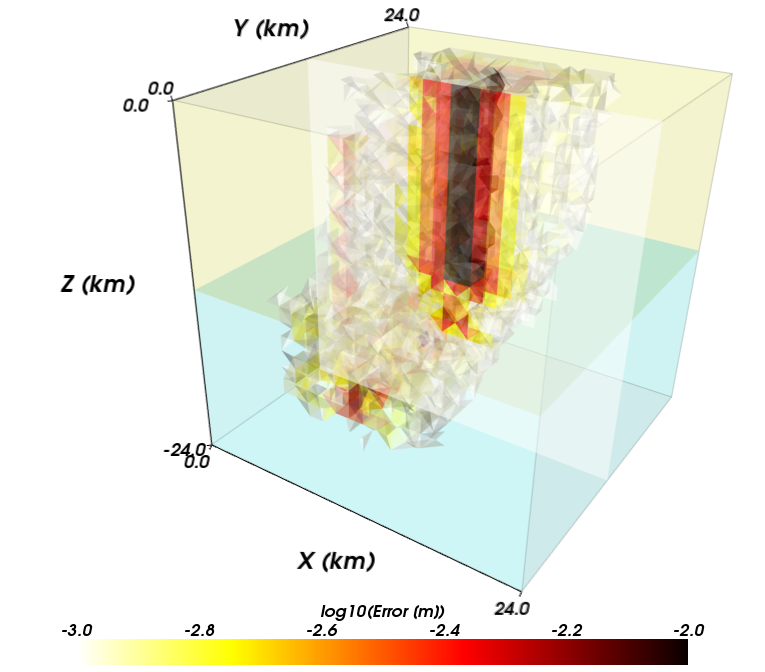Crustal Dynamics

|
I am co-author of the PyLith code with Brad Aagaard and Charles Williams. We have developed open-source finite-element software for 2-D and 3-D dynamic and quasi-static modeling of crustal deformation. This software, PyLith (current release is 2.0) can be used for quasi-static viscoelastic-plastic modeling or dynamic spontaneous rupture and/or ground-motion modeling. Unstructured and structured finite-element discretizations provide support for spatial scales ranging from tens of meters to hundreds of kilometers with temporal scales in dynamic problems ranging from milliseconds to minutes and temporal scales in quasi-static problems ranging from minutes to thousands of years. PyLith development is part of the NSF funded Computational Infrastructure for Geodynamics (CIG) and the software runs on a wide variety of platforms (laptops, workstations, clusters, massively parallel machines). Binaries (Linux, Darwin, and Windows systems) and source code are available from geodynamics.org. PyLith uses a suite of general, parallel, graph data structures from PETSc called DMPlex for storing and manipulating finite-element meshes. This permits use of a variety of 2-D and 3-D cell types including triangles, quadrilaterals, hexahedra, and tetrahedra. It also allows faithful representation of faults, automatic parallel refinement, and selection of arbitrary surfaces and volumes for output. Current features include prescribed fault ruptures with multiple earthquakes and aseismic creep, spontaneous fault ruptures with a variety of fault constitutive models, time-dependent Dirichlet and Neumann boundary conditions, absorbing boundary conditions, time-dependent point forces, and gravitational body forces. PyLith supports infinitesimal and small strain formulations for linear elastic rheologies, linear and generalized Maxwell viscoelastic rheologies, power-law viscoelastic rheologies, and Drucker-Prager elastoplastic rheologies. Current development focuses on coupling quasi-static and dynamic simulations to resolve multi-scale deformation across the entire seismic cycle and coupling elasticity to heat and/or fluid flow. |
Papers
- Our upcoming paper will detail the use of quadratic elements, an improved fault formulation, and general finite element residual formulation.
- This paper details our approach to fault modeling, as well as parallelization. It demonstrates how the PETSc DMPlex class was used to create cohesive cells, organize the finite element calculation, and communicate with the PETSc solvers.
Software
